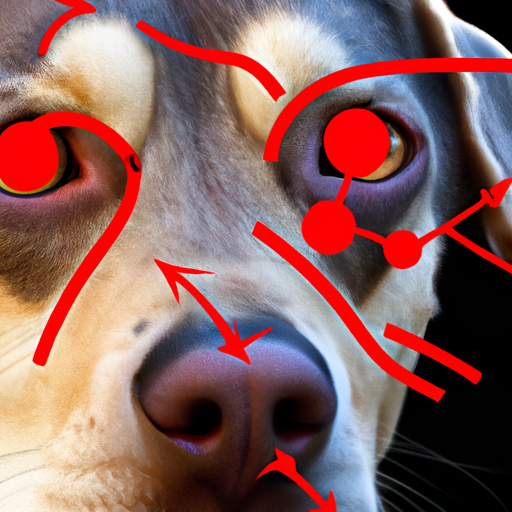As a caregiver to your furry best friend, you might have noticed, on occasion, a reddening of your dog’s eyes. It’s natural to wonder why this happens and what you can do about it. Let’s delve into this topic and uncover the reasons behind this phenomenon.
H2: The Anatomy of a Dog’s Eye
Understanding why a dog’s eyes turn red begins with understanding the anatomy of your dog’s eyes. Just like humans, dogs’ eyes are complex organs that allow them to perceive their environment.
- Cornea: This is the clear, outermost layer of the eye. It’s the first line of defense against bacteria and foreign objects.
- Sclera: This is the white part of the eye. It’s a layer of tissue that provides structural support.
- Conjunctiva: This is a thin layer of tissue covering the front of the eye and lining the eyelids.
Now, you might be wondering how this relates to your dog’s eyes turning red. The redness is often due to inflammation or irritation in one or more of these parts.
H2: Common Causes of Red Eyes in Dogs
There are several reasons why your dog’s eyes might turn red. Some are quite benign, while others could be indicative of a more serious issue. Here are a few common causes:
- Allergies: Just like humans, dogs can suffer from allergies, which can cause red, itchy, and watery eyes.
- Infections: Bacterial or viral infections can cause redness, discharge, and discomfort.
- Dry Eye: This condition is characterized by insufficient tear production, leading to dry, red eyes.
- Glaucoma: A serious condition where increased pressure in the eye leads to redness, pain, and potentially, vision loss.
H2: When to Seek Veterinary Help
While occasional redness might not be cause for concern, certain signs could indicate a more serious problem.
- Persistent redness: If your dog’s eyes remain red for a prolonged period, it might be time to consult a vet.
- Behavioral changes: If your dog is rubbing their eyes excessively, squinting, or showing signs of discomfort, it’s worth getting a professional opinion.
- Discharge or swelling: These could be signs of an infection or other serious eye condition.
H2: How to Prevent Red Eyes
Now that we’ve discussed the causes and when to seek help, let’s look at what you can do to prevent red eyes in your dog.
- Regular grooming: Keep your dog’s fur trimmed around their eyes to prevent irritation.
- Eye drops: Some dogs may benefit from regular use of dog-specific eye drops to keep their eyes lubricated.
- Regular check-ups: Regular veterinary check-ups can catch potential problems early.
H2: FAQs on Red Eyes in Dogs
In this section, we’ll answer some commonly asked questions about red eyes in dogs.
Q: Can red eyes be a sign of stress in dogs?
A: Yes, stress can cause redness in a dog’s eyes. Other signs of stress include changes in behavior, loss of appetite, and excessive panting.
Q: Are some breeds more prone to red eyes?
A: Yes, brachycephalic breeds (like Bulldogs and Pugs) often have more eye issues due to their facial structure.
Q: Can I use human eye drops on my dog?
A: No, you should never use human medication on your dog without consulting a vet. Some ingredients may be harmful to dogs.
Q: How often should I clean my dog’s eyes?
A: Ideally, you should clean your dog’s eyes daily with a soft, damp cloth to remove any discharge or debris.
Remember, your dog’s eye health is crucial to their overall well-being. As their caregiver, it’s up to you to keep an eye out for potential problems and seek veterinary help when needed.



